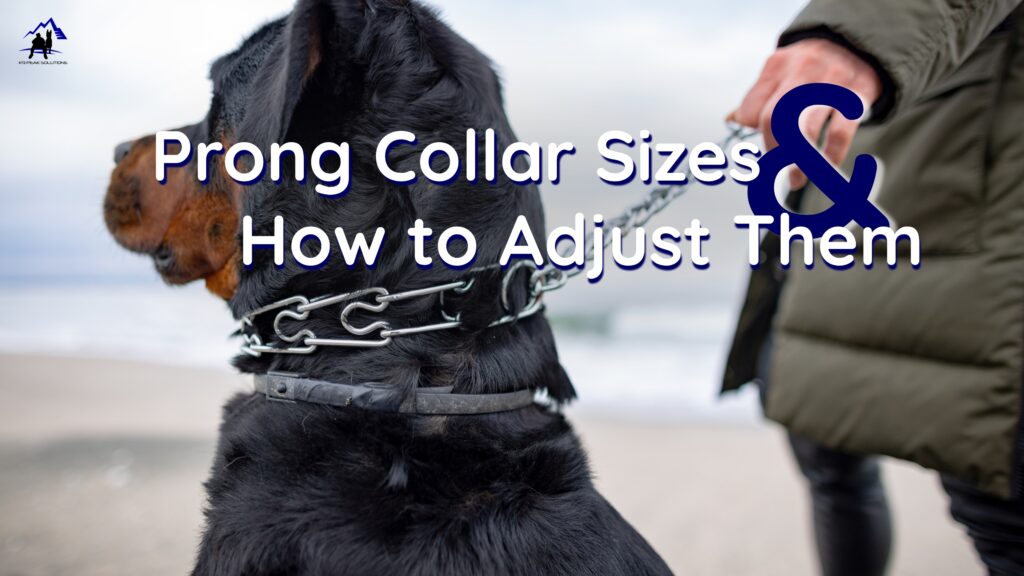
Prong collars are an essential tool for controlling dogs that struggle with pulling, but to ensure they work effectively and safely, choosing the right size and adjusting them properly is crucial. In this chapter, we explore how to select the right prong collar size for your dog and provide a detailed guide on how to adjust it for the best fit. Understanding the proper fit of the prong collar ensures both the safety and comfort of your dog while enhancing the effectiveness of your training.
Key Training Tips:
1. Choosing the Right Prong Collar Size
Selecting the right prong collar size is essential for ensuring that your dog gets the correct level of pressure and correction. If the collar is too large, it may not provide effective control. If it’s too small, it could cause discomfort or injury to your dog.
Prong collars typically come in various sizes, and the best way to find the right one is to compare the collar to the dog’s neck and ensure that it fits snugly, not too tight and not too loose.
2. Adjusting the Prong Collar
The ability to adjust the prong collar is a key feature. Most prong collars come with removable links that allow you to customize the size for your dog. The trainer demonstrates how to add or remove links to ensure a proper fit. If the collar is too loose, you can add links to tighten it. If it’s too tight, you can remove links to make it more comfortable for your dog.
When adjusting, ensure that the collar sits high up around your dog’s neck, close to the jawline, to allow for proper function and correction. The collar should not slide down to the dog’s throat, nor should it be so tight that it restricts breathing or causes discomfort.
Proper Use of Prong Collar
The correct placement of the prong collar and leash attachment is critical for its safe and effective use. In this chapter, the trainer emphasizes the importance of attaching the leash to the swivel ring (not the O-ring) to prevent the collar from twisting or becoming misaligned. This ensures that the collar remains in the correct position and applies even pressure when necessary.
When using a prong collar, you should apply a quick “pop” to the leash (also called a leash correction) to communicate with your dog. This helps teach the dog that pulling on the leash results in discomfort, encouraging them to walk calmly at your side.
Why Proper Fit and Size Matter
Using a prong collar that is the right size and adjusted properly is essential for its effectiveness. A collar that is too loose or too tight will not function as intended and could cause harm to your dog. Ensuring that the collar sits high up on your dog’s neck around the jawline is crucial for the safety and comfort of the dog during training sessions. Additionally, always remember to adjust the collar as needed to accommodate your dog’s growth or changes in their physique.
Conclusion
Choosing the correct prong collar size and making sure it’s adjusted properly can make a significant difference in the effectiveness of your training. By following the tips outlined in this chapter, you can ensure that your prong collar provides the right level of correction while keeping your dog comfortable and safe.
Remember, prong collars should be used as part of a well-rounded training program, and consistency is key to achieving lasting results.



